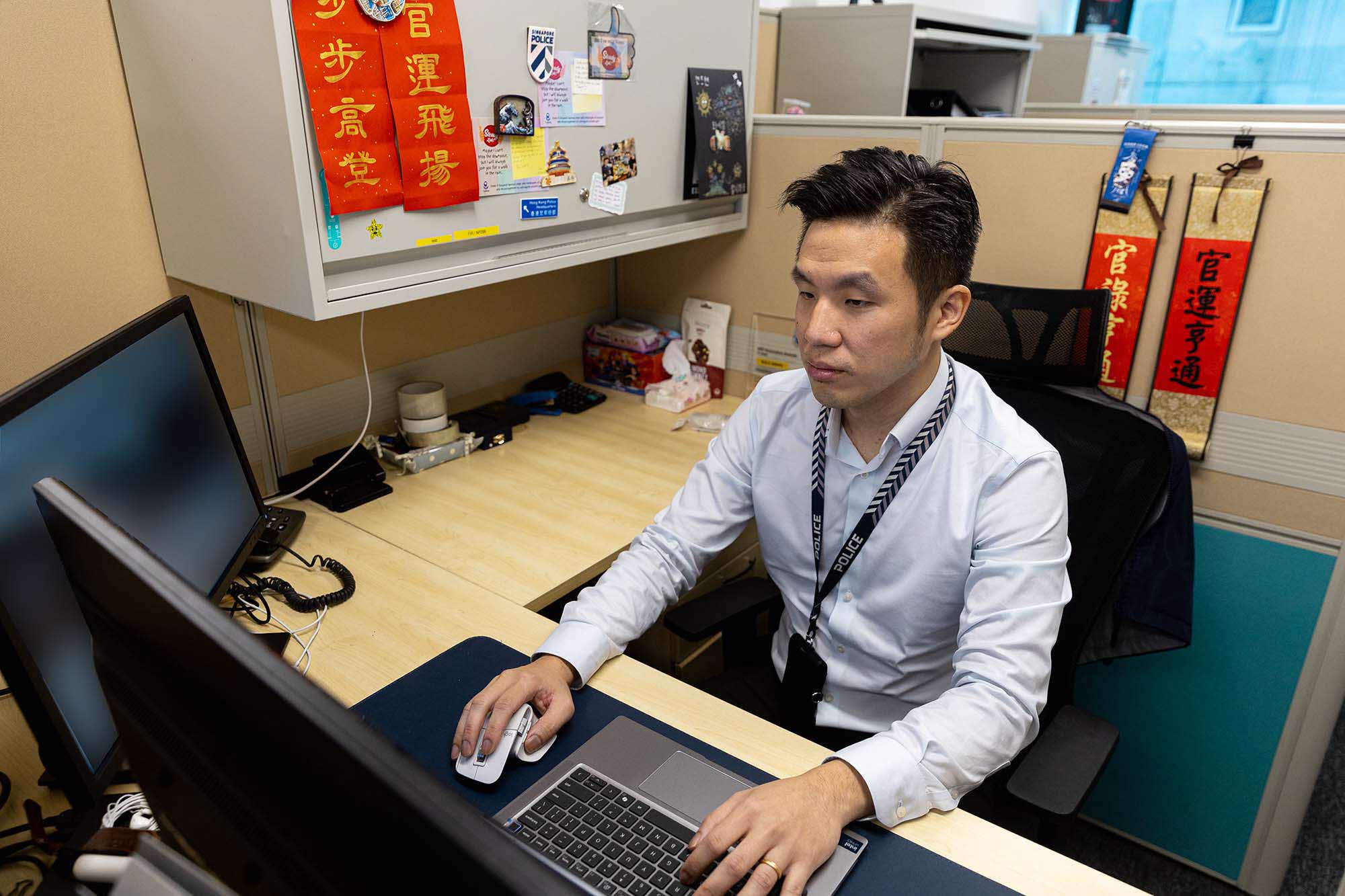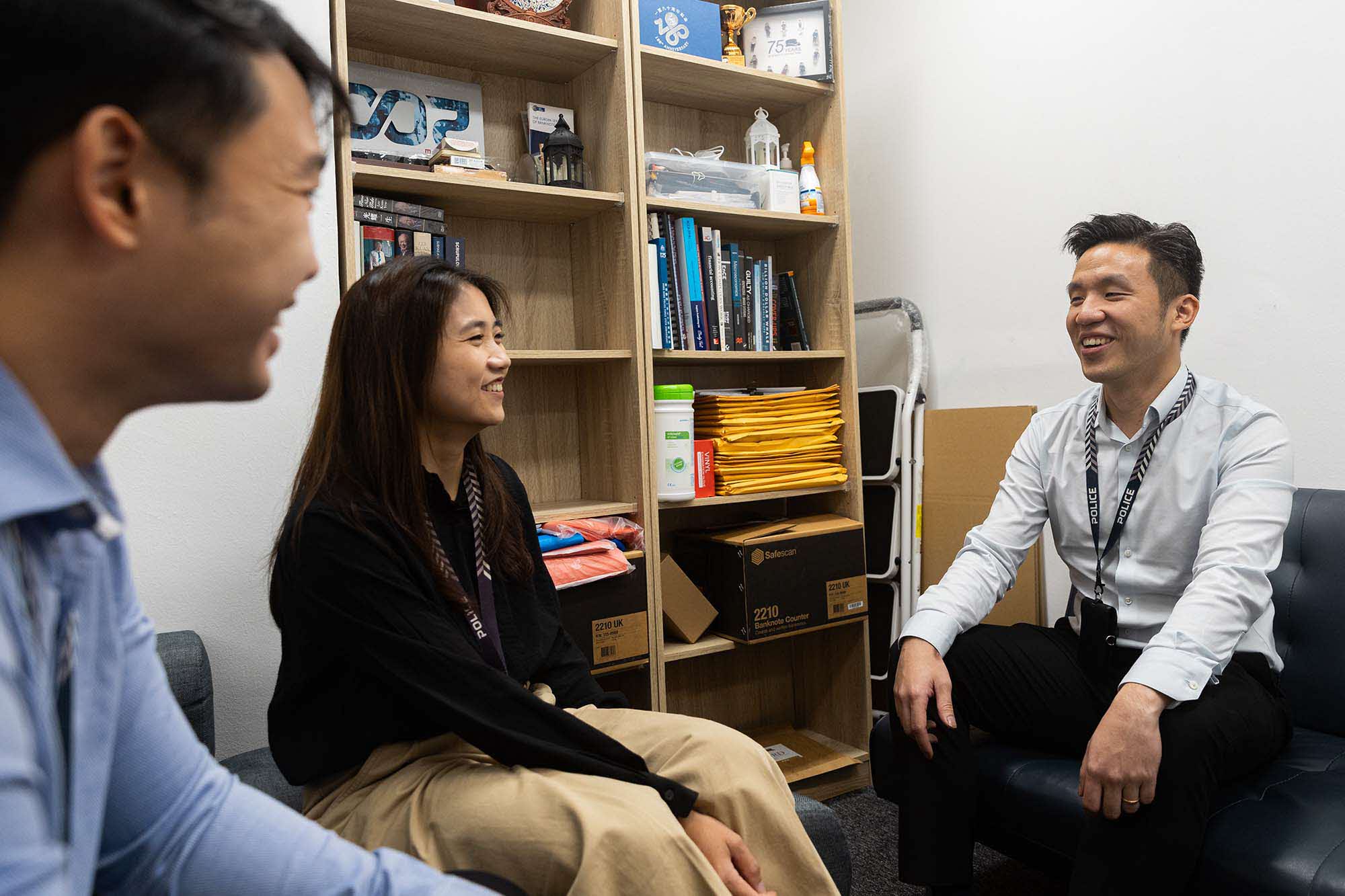
In today’s complex criminal landscape, Organised Crime Groups (OCGs) tend to hide their ill-gotten gains in sophisticated financial networks. Fighting organised crime isn’t just about investigations and interviewing suspects. Sometimes, it’s also about following the money trail – and that’s where the Financial Investigation Branch (FIB) of the Singapore Police Force (SPF) comes in.
Both the FIB and the Organised Crime Branch (OCB) are part of the Specialised Crime Division of the Criminal Investigation Department (CID). Since 2015, the OCB has conducted major operations that have disrupted significant criminal syndicates.
A critical element in their success is their close collaboration with the FIB. By tracing and analysing the movement of ill-gotten gains, the FIB helps to identify syndicate leaders, uncover their assets and ultimately dismantle their criminal operations.
Deputy Superintendent of Police (DSP) Wong Ken Jon, Deputy Officer-in-Charge (DOC) and Senior Investigation Officer (SIO) at the FIB, shares how the branch contributes to fighting organised crime.
Tell us more about your policing journey.
I wanted a job that wasn’t just exciting but also meaningful, as I believe that policing directly impacts people’s lives.
Before joining the FIB, I was an Investigation Officer at Clementi Police Division, followed by a Team Leader of an Emergency Response Team at Jurong Police Division.
What drew me to join the FIB in 2020 was the opportunity to apply what I’d learnt in university – accounting and finance – to tackle the complex money laundering schemes used by OCGs. It's a rewarding challenge, like solving a jigsaw puzzle, except the pieces are financial records and transactions.

What does the FIB do, and how does the FIB work in tandem with the OCB?
In simpler terms, the OCB “chases” the criminals involved in the OCG and the FIB “chases” their assets.
We don’t just prosecute OCG members for money laundering offences; we also confiscate their crime proceeds. This dismantles OCGs by taking away ill-gotten gains. While the OCB gathers evidence of the original offence, the FIB traces the flow of funds to map the syndicate’s financial network.
What are your responsibilities in the FIB?
As an SIO, I build cases to secure convictions for money laundering offences and to confiscate criminal proceeds under the Corruption, Drug Trafficking and Other Serious Crimes Act (CDSA), Organised Crime Act (OCA) and Criminal Procedure Code (CPC) . This involves analysing money trails and interviewing suspects to uncover the criminal intent.
Since becoming a DOC in 2024, I also support my Officer-in-Charge in managing my team members, and providing guidance in their day-to-day work.
What’s your most memorable case?
It would be the $3 billion money laundering case in 2023. What made it memorable wasn’t just the amount of seized criminal proceeds, but the level of complexity involved in disguising them.
We had to sift through convoluted financial records and transactions spanning multiple countries and corporate structures. Successfully tracing and confiscating those funds was deeply rewarding.

What unique financial crime threats does Singapore face?
As a well-connected, global financial hub, Singapore can be used to move funds from crimes committed overseas. With the shift from traditional banking to digital banking and cryptocurrency, money can now move across multiple accounts and international borders almost instantaneously, with a high degree of anonymity. These challenges have been compounded by the proliferation of Artificial Intelligence and sophisticated financial technologies.
To counter these threats, the FIB constantly updates new skills and learn new technologies to counter evolving threats. For example, we use data analytics platforms to conduct sense-making on large volumes of financial data, flag anomalies and identify connections within a criminal network.
What are some key traits and skills that investigators in the FIB need to possess?
We need to have a sense of curiosity and persistence. Unlike conventional crimes that typically leave behind physical evidence, the evidence we deal with in the FIB can be a massive and confusing stream of numbers and data.
FIB officers must dive into this complexity and follow the thread relentlessly. At the same time, we also need to be able to step back, look at the big picture and tie the evidence back to the predicate offence. It’s about figuring out the narrative behind the flow of funds.

What is one thing you wish people knew about working in the FIB?
We’re a highly specialised unit with an incredible bond. People often see “Financial Investigation” in our designation and assume it’s just individual officers staring at spreadsheets. But the reality is that teamwork is our most important asset. We rely on each other’s unique strengths and our success is built on collaboration and mutual respect.
What does the OCB and FIB’s 10th anniversary mean to you?
This milestone is a chance to appreciate the strong foundations laid by our predecessors who recognised an emerging threat of highly sophisticated profit-driven OCGs. They built the building blocks in place for us to tackle this threat effectively. Over the years, we’ve grown into an indispensable branch within the CID, and I’m proud to contribute to building this legacy.
The OCB and FIB’s 10th Anniversary
This year marks a significant milestone for the Organised Crime Branch (OCB) and Financial Investigation Branch (FIB) as they celebrate their 10th anniversary. Police Life spotlights officers from both branches, offering readers an inside look at the vital work OCB and FIB officers conduct daily in their fight against sophisticated criminal networks and financial crimes.
Read about the story of founding Head of the OCB, Deputy Assistant Commissioner of Police Eugene Wang here!


